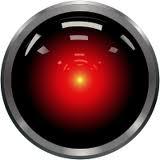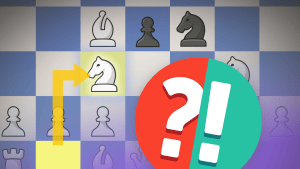
Computers in chess... Good or Evil? Part Two.
In last week's article, we looked at a very interesting phenomenon of computer chess - the "horizon effect." Basically it is a computer's inability in certain situations to see the future no matter how fast its processor is or how many plys it can calculate. In the following game our "human computer" Hikaru Nakamura takes full advantage of this phenomenon. This brilliant game shows why people are still smarter than computers, no matter how powerful the computers chips become. Let's examine this epic battle step by step.
Part 1: Fortress
The position is an obvious draw since neither side can open the position to his advantage.
Part 2 : Nakamura's First Trick
Nakamura sacrifices (or maybe just blunders, since it is just a 3 minute ICC blitz) an exchange. But the resulting position is still a 'dead' draw because it is still the same fortress:
Part 3 : The devilish trick!
As the position is still a draw, both sides keep moving aimlessly back and forth and the game comes to the inevitable "50 moves" rule. As most of you know, if in the duration of 50 moves no capture was made and no pawn moved, one of the opponent's can claim a draw. The computer could see that the game is about to be drawn, but despite the positive evaluation of the position it couldn't do much as the only way to avoid the draw was to push and sacrifice a pawn which change the evaluation to about even. So, Nakamura tries to avoid a draw by sacrificing an exchange one move before the "50 moves rule" takes effect!
And now we have another fortress, but the game continues!!
Part 4 : The Bait!
The opponents' aimlessly moves and even the trade of Queens on move 124 doesn't change anything. Another instance of the '50 moves rule' comes into play and on move 174 the computer must make a tough choice. Either it makes just about any move and allows the game to be drawn or it sacrifices a pawn just to avoid the draw. Unlike the situation on move 60, computer's evaluation of the position is so positive that even after the pawn sacrifice it thinks it is winning. So it sacrifices a pawn!
Part 5: Massacre
After White loses a very important pawn (really, the anchor of his position), he loses his whole queenside, pawn by pawn. After that, White's clumsy Rooks are no match for Black's minor pieces and the armada of passed pawns. So, the game reaches the next position:
Part 6 : Public Humiliation
The computer again 'forgets' to resign and just like in the game from the previous article, Nakamura humiliates the computer in front of cheering audience:
It is a pity that it's impossible to make a Hollywood movie based on this game. In my opinion this game is as exciting for a chess player as the classical movie "Sting" with Paul Newman and Robert Redford.
to be continued...

